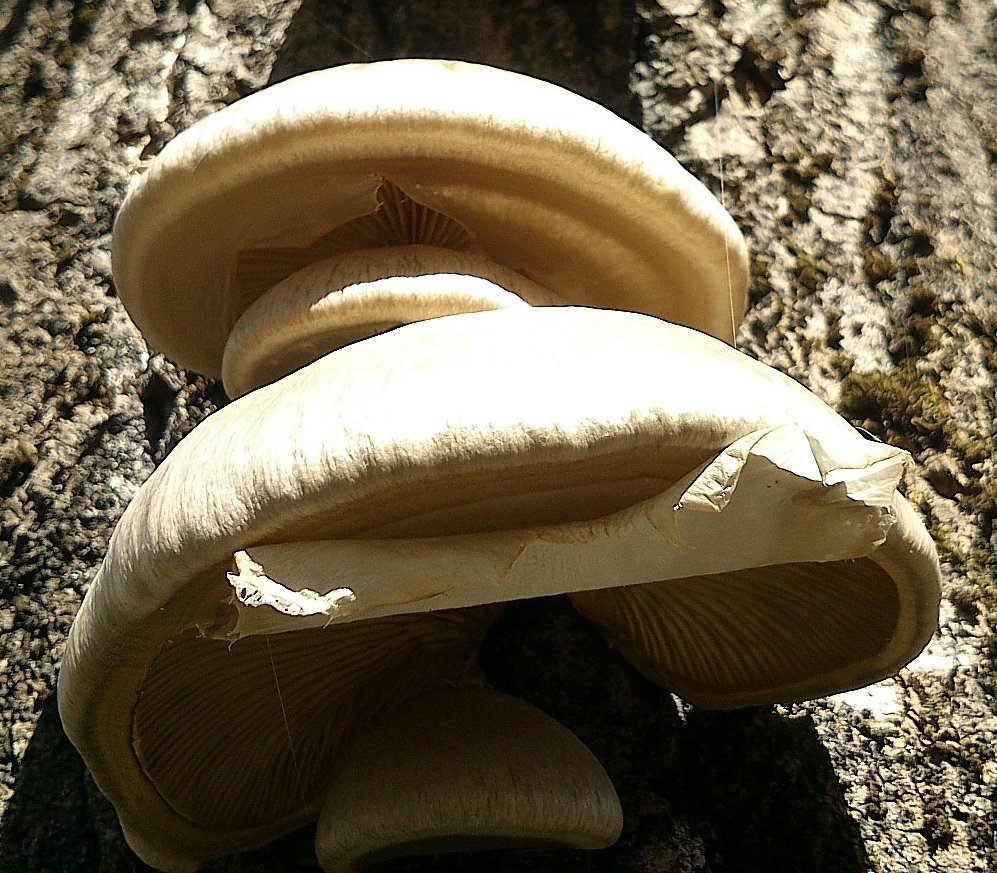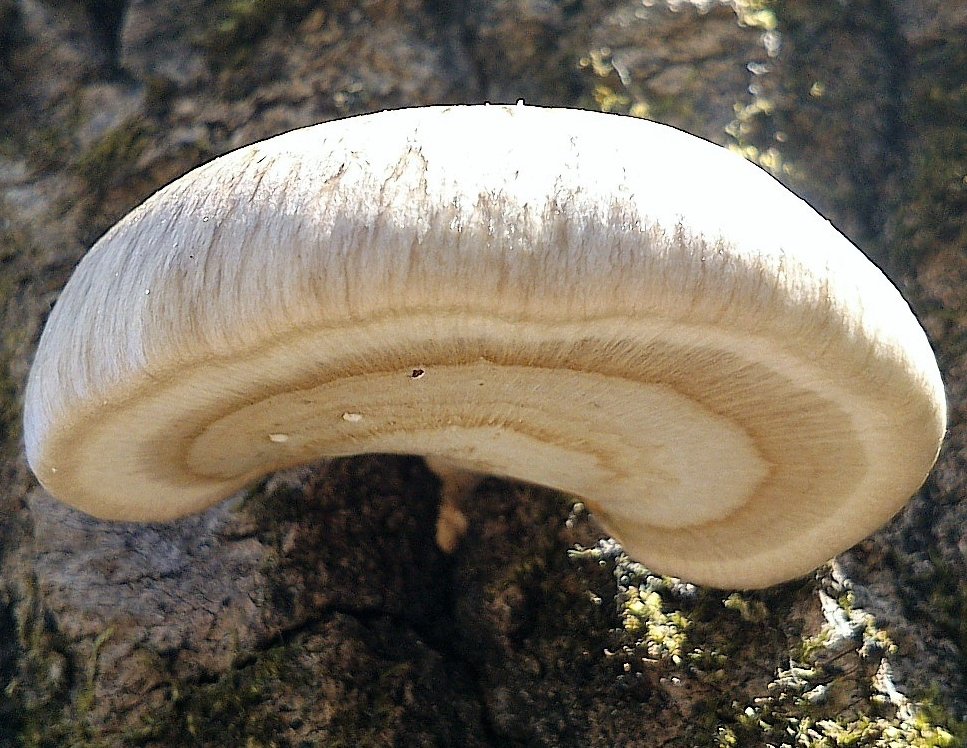Oyster mushroom (Pleurotus calyptratus)
- Division: Basidiomycota (Basidiomycetes)
- Subdivision: Agaricomycotina (Agaricomycetes)
- Class: Agaricomycetes (Agaricomycetes)
- Subclass: Agaricomycetidae (Agaricomycetes)
- Order: Agaricales (Agaric or Lamellar)
- Family: Pleurotaceae (Voshenkovye)
- Genus: Pleurotus (Oyster mushroom)
- Type: Pleurotus calyptratus (Oyster mushroom covered)
:
- Oyster mushroom sheathed
- Agaricus calyptratus
- Dendrosarcus calyptratus
- Tectella calyptrata
- Pleurotus djamor f. calyptratus

The fruit body of covered oyster mushrooms is a dense sessile cap, 3-5 in size, sometimes, rarely, up to 8 centimeters. At the very beginning of growth, it looks like a kidney, then it becomes lateral, fan-shaped. The edge of the cap of young specimens is strongly wrapped downwards, with age it remains strongly bent. Convex, smooth and slightly sticky near the base, no villi.
The color of the cap varies from brownish gray to leathery brownish. Sometimes circular wet stripes are visible on its surface. In dry weather, the color of the cap becomes steel-gray, with a noticeable radial sheen. In the sun, it fades, becoming white.
Hymenophore: lamellar. The plates are wide, arranged in a fan, not too frequent, with plates. The edges of the plates are uneven. The color of the plates is yellowish, yellowish-leather.
Cover: yes. The plates are initially covered with a rather thick protective film-blanket of a light shade, lighter than the plates. With growth, the coverlet is torn, tearing off at the base of the cap. Young mushrooms retain rather large pieces of this cover, it is simply impossible not to notice them. And even in very adult specimens, you can see the remains of a veil along the edges of the cap.

The pulp is dense, fleshy, rubbery, white, whitish in color.
Odor and Taste: The taste is mild. The “wet” smell is sometimes described as a distinct “raw potato aroma”.
The leg itself is missing.
Oyster mushroom grows in wooded areas, and begins to bear fruit in the spring, along with lines and morels. You can see this mushroom on dead aspen trees, as well as fallen aspens in the forest. Fruits annually, not too often. Grows in groups. Fruiting begins at the end of April and continues until July. The largest harvest of these mushrooms can be harvested in May. Covered oyster mushrooms are common in Northern and Central Europe.
Gourmets consider the pulp of this mushroom to be too hard (it is quite dense, like rubber), so the species is often not recommended for consumption. In fact, covered oyster mushrooms are quite edible. They can be boiled and fried.
Oyster mushroom covered cannot be confused with any other mushroom, a light dense cover and the absence of a leg are its calling card.
Oak oyster mushroom (Pleurotus dryinus), in which the presence of remnants of the bedspread is also considered a distinctive feature, grows later, prefers oaks, is slightly larger, the skin of the cap is not naked, and the oak oyster mushroom has a pronounced stem. So it is impossible to confuse them.
The covered oyster mushroom got its name because in the fruiting bodies of this fungus, the hymenophore plates are covered with a film. This is not observed in ordinary oyster mushrooms. This mushroom, unlike other varieties of oyster mushrooms, grows in single specimens (not in clusters), which, however, are collected in small groups. Because of this, this type of oyster mushroom is also called single.
Photo: Andrey









